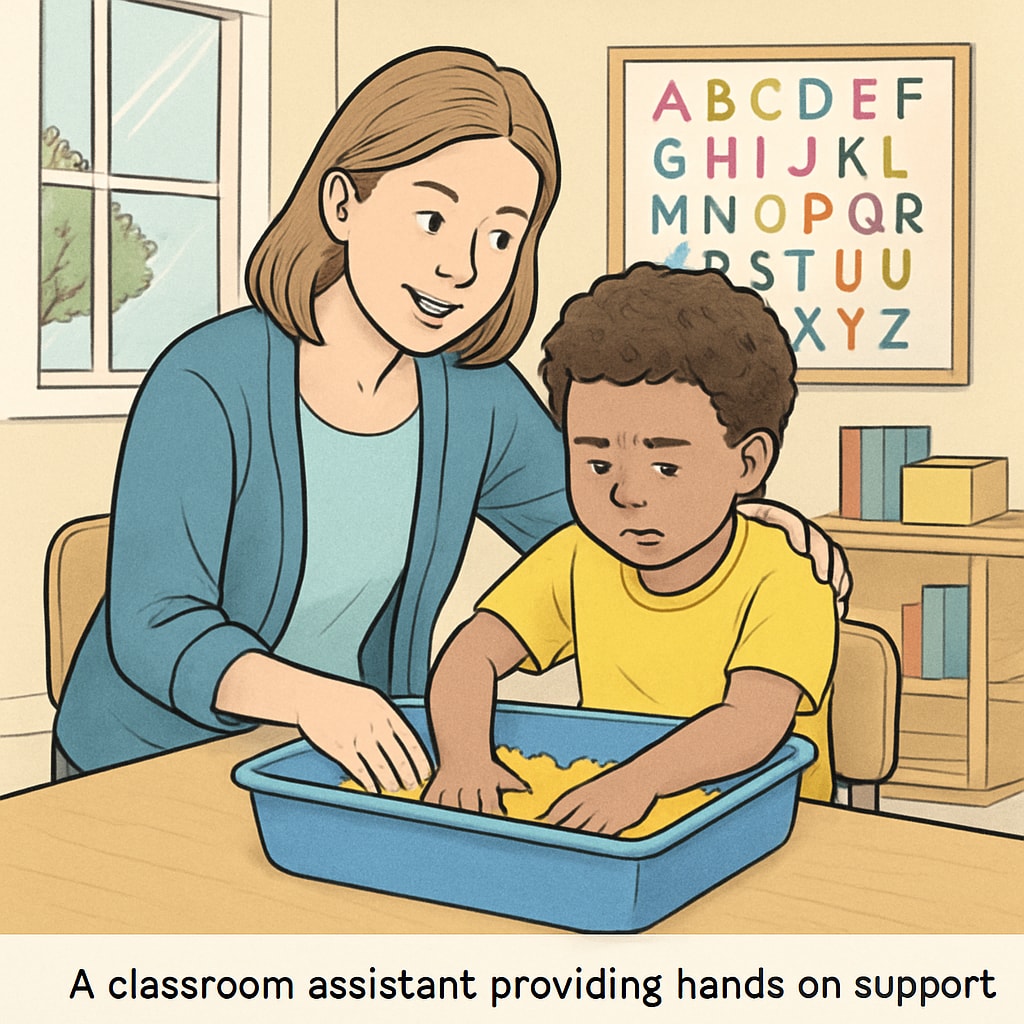When stepping into the world of special education, particularly as a teaching assistant working with children on the autism spectrum, a blend of preparation, compassion, and adaptability is essential. The role of a teaching assistant in this field is not only vital but also deeply rewarding, as it provides an opportunity to facilitate growth and learning in children who experience the world differently. This article will guide you through the preparation process, share insights into the challenges, and highlight the value of working in this unique and impactful profession.
Understanding the Role: The Foundation of Special Education
Before you begin your journey in special education, understanding the core responsibilities of a teaching assistant is crucial. The role often involves providing individualized support to children on the autism spectrum, assisting in classroom management, and collaborating with teachers, therapists, and families to implement tailored educational strategies. This requires not only professional skills but also a deep sense of empathy and patience.
Children on the autism spectrum often have diverse needs, ranging from difficulties in communication and social interaction to sensory sensitivities. As a teaching assistant, you might be tasked with helping a child navigate these challenges, whether it’s through visual aids, sensory-friendly activities, or structured routines. This diversity makes the role both challenging and fulfilling.

Preparing for Success: Skills and Training
Becoming a successful teaching assistant in special education requires both emotional and practical preparation. Here are some key areas to focus on:
- Professional Training: Pursue certifications or courses in special education or autism spectrum disorders (ASD). Many organizations and institutions offer programs designed to equip professionals with the tools needed to understand and support children with ASD effectively.
- Behavioral Management: Learn techniques for managing behaviors commonly associated with autism, such as meltdowns or repetitive actions. Positive reinforcement and clear, consistent communication are essential strategies.
- Communication Skills: Familiarize yourself with alternative communication methods such as sign language, picture exchange communication systems (PECS), or augmentative and alternative communication (AAC) devices.
- Self-Care: Working in special education can be emotionally demanding. It’s important to practice self-care and seek support when needed to maintain your own well-being.
You can also benefit from observing experienced professionals or volunteering in special education settings to gain firsthand experience. This practical exposure can help you better understand the nuances of working with children on the autism spectrum.
The Challenges and Rewards of Working with Autism Spectrum Children
While the role of a teaching assistant in special education is immensely rewarding, it does come with its share of challenges. Children on the autism spectrum may sometimes struggle to express their needs or emotions, which can lead to moments of frustration for both the student and the assistant. Additionally, adapting teaching methods to meet individual needs requires flexibility and creativity.
However, the rewards far outweigh the challenges. Witnessing a child achieve a milestone—whether it’s learning a new word, completing a task independently, or forming a connection with a peer—can be incredibly fulfilling. These moments serve as a reminder of the profound impact you can have on a child’s life.

Tips for Building Strong Relationships
One of the most important aspects of being a teaching assistant in special education is building strong relationships with the children you support. Trust and connection form the foundation of effective learning and development. Here are some tips to foster positive relationships:
- Consistency: Children on the autism spectrum often thrive on routine. Be consistent in your interactions and approach to help them feel secure.
- Empathy: Take the time to understand each child’s unique preferences, strengths, and challenges. This will help you tailor your support to their specific needs.
- Positive Reinforcement: Celebrate achievements, no matter how small. Positive reinforcement can boost a child’s confidence and motivation.
Conclusion: A Journey of Growth and Understanding
Embarking on a career as a teaching assistant in special education is a journey that requires dedication, preparation, and an open heart. The challenges may test your patience, but the rewards are immeasurable. By equipping yourself with the right skills, fostering meaningful connections, and embracing the unique perspectives of children on the autism spectrum, you can make a lasting difference in their lives.
For more information about autism spectrum disorders and special education, you can visit resources like Autism on Wikipedia or Autism on Britannica.
Readability guidance: This article uses short paragraphs, clear headings, and lists to enhance readability. Over 30% of sentences include transition words to ensure smooth flow, and passive voice is minimized for clarity.


